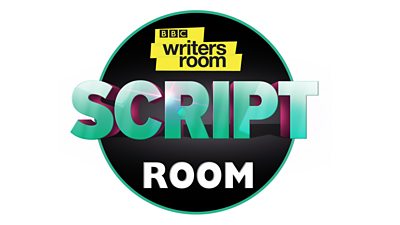Ahead of our (from Monday 7th December to 5pm on Wednesday 6th January) we spoke to for some advice on getting your script into its best possible shape. Philip runs the Channel 4 Screenwriting Course and is well-used to reading a large number of script submissions. He recommends some key steps that you can take to make sure that your script is presented in its best possible version, demonstrating a professional approach to your work.
In our submission window we accept scripts written for TV, Film, Radio, Stage or online. Although Philip has concentrated on screenplays in his advice, the general points apply, regardless of the format.
Make sure you only send your script to us once it is really ready. We don’t read early drafts, outlines, pitches, synopses, treatments etc and we won’t accept a resubmitted script in a later window.

I’m currently in the process (with the much-needed help of eight excellent script readers) of working my way through the thousands of scripts submitted for the and it has reminded me of just how important it is to present your script as well as possible.
How you present your story on the page is a vital part of the creative process of telling your story effectively.
Reading scripts continuously over six weeks is an intense, demanding (and hugely exciting and rewarding) experience. As a reader it’s demoralising having to pick your way through a script that is hard to read – whether that’s because of dodgy spelling, grammar and a mass of typos; a script that isn’t laid out correctly and professionally; writing that lacks economy, clarity and fluency; or, above all, writing that doesn’t enable the reader to visualise how this story will play on screen.
LAYOUT / FORMATTING
If possible then professionally-submitted screenplays need to be written using screenwriting software. The industry standard is Final Draft, which you may want to consider as an investment in your future; if it’s beyond your budget, there are viable alternatives that you can download for free from the internet – eg Celtx, Highland.
If possible don’t write your script in ‘Word’ – it won’t look right, however well you mimic screenwriting layout; and it will make the writing process much harder.
The more you use screenwriting software, the quicker you will develop and improve your use of all the necessary elements of screenwriting (scene headings / sluglines, action / directions, characters, parentheticals, dialogue, transition). All of these are the tools you need to write a screenplay – and you need to learn how to use them. Your expertise with screenwriting software will come from two things…
READING AND WRITING
Would you attempt to write a novel if you’d never read one? And yet I regularly receive scripts from writers who have clearly never read a screenplay. There is no substitute for endless reading and writing. You need to read the best screenplays to learn how the best storytelling works on the page (and even the less good screenplays are helpful to read). What you read will inspire and inform your writing, in terms of creativity but also, importantly, in helping you to think about how you present your story on the page.
What to include in the ‘action’ (what we more usually refer to as the ‘directions’ – but I think referring to it as ‘action’ is a useful reminder that the best directions are dynamic); thinking about the balance between dialogue and action (what do the best scripts look like on the page?); and becoming more adept and confident with the minutiae of scriptwriting software (eg dual dialogue, transitions within scenes, transitions between scenes and how to describe these on the page – there are decisions to be made, for instance about whether to include ‘CUT TO’ at the end of every scene – probably not necessary).
It’s a convention of screenwriting that you don’t include camera moves, angles, shot sizes, etc in the writing.
The more screenplays you read, the more confident you will be in writing your own, and the more you will think about what works and what doesn’t work in the way you present your story on the page.
Some scripts instantly look professional and reassuring in the way they are laid-out, in the balance between dialogue and action. Some instantly send the wrong signals – if there are page-long blocks of action or endless ten page two-handed dialogue scenes.
The Â鶹ԼÅÄ Writersroom script library is an invaluable resource!
PROOF-READING
This is a vital part of the creation of your script. The first draft you submit professionally should have been re-drafted and re-drafted until you are confident it’s as good as it can be (without driving yourself mad). Proof-reading is always more than just proof-reading – it’s about editing, honing and, above all, improving the script.
If possible, it’s always a good idea to print the pages out when you are proof-reading. Somehow your script will look different on the printed page and you will spot things you won’t have spotted on your computer screen.
(Some writers seem to think writing ‘Draft 17’ on their script will demonstrate an impressive thoroughness – whereas I think it is more often a hostage to fortune – ‘You’ve written 17 drafts and still haven’t picked up on the 7 typos on page1?!’)
If you are dyslexic or have real difficulties with spelling, grammar etc, I would strongly advise you to get someone else to do your proof-reading as well as you – but not instead of you; even if this is the case, proof-reading should be a vital part of your creative process.
Apostrophes, their / there / they’re, etc. You’re a professional writer – it’s really not hard to get these things right – a quick google or YouTube tutorial should put you right. There is the occasional error / typo in every single script – that is fine and to be expected; but consistent and multiple typos and errors make your script harder to read; if you can’t get this relatively easy part of the job right, it’s unlikely that you’ll get the (much more demanding) job of wrangling your story into its optimum dramatic shape right.
GETTING THE STORY OUT OF YOUR HEAD AND ONTO THE PAGE
Despite what I said earlier, there is a role for a friendly reader of your script before you submit it professionally – someone to ask you questions about the clarity of the story that you may have become blind to, helping you to work out if you have confused the reader with lack of clarity or omitted what is actually vital visual information.
So often what is in your head doesn’t make it fully or clearly enough onto the page. And sometimes only a new reader’s perspective will help you see / realise this. It’s a tricky balance between over-burdening the reader with too much unnecessary and boring visual information (often about inanimate objects such as furniture) and omitting vital visual information (like which characters are present in the scene).
Help the reader to visualise the world of your story in a way that feels vivid and cinematic.
I have so many conversations with writers when I ask them to explain what they mean by a sentence in the action, what they are trying to convey. They then explain it to me lucidly and interestingly, and I say - why don’t you write it just as you’ve explained it to me. Think about the audience / reader’s point of view when re-reading and re-drafting your script.
DESCRIBING CHARACTERS
You should introduce / describe characters when we first meet them in the script (not in a long list at the front of your script – that’s for stage plays not screenplays.) These descriptions should be vivid and visual. They should help the reader visualise this character. They shouldn’t give us backstory and psychological information that won’t be accessible to the audience. Let the reader discover what there is to be discovered about characters at the same time as the audience.
THINK VISUALLY
The reader of your screenplay should be able to play it as a film in their mind’s eye. The reading experience should, as closely as possible, mimic the audience’s experience. The script is the blueprint for the film - enable your reader to experience it as a film.
With this in mind, I feel strongly that the ‘action’ / directions should only contain filmable action / visual information. You shouldn’t include unfilmable information, privileged information for the reader that isn’t accessible to the audience e.g. ‘Cindy, 33, long dark hair and, as we’ll discover, a serial cat killer...’ Omit – ‘as we’ll discover, a serial cat killer’ – you’re not going to know this by looking at her (NB This is a contentious issue – and I know many writers / producers may find this a bit too ‘hard-line’ – but I think this should be the writer’s default approach; any exceptions to this should be exactly that - exceptions).
CLARITY
Good screenwriting is not literary. The reader of your screenplay just wants to visualise how your script will play on screen; they aren’t interested in the range of your vocabulary. Err on the side of simplicity, economy and clarity. In a screenplay, grass isn’t verdant, it’s green. You’re not trying to win the Booker Prize.
YOU THE WRITER
As a general principle, deliver your story on the page with clarity, flair and economy and DON’T explain or interpret the story on the page – trust the reader to make their own interpretations of each character and situation.
For instance, you never need to start a direction with ‘We see…’. This is self-evident and instantly gives the sentence a passive rather than dynamic energy. Avoid florid or humorous writerly asides and comments on the action. Occasionally these add to the fun and texture of the reading experience – but more often they place the writer between the reader and the story in a way that is jarring and unhelpful.
FINALLY
One of the key aspects to writing your screenplay is thinking about making it dynamic. There should be movement – both actual and metaphorical – in the way you tell your story. Shifts in tone from scene to scene; both physical and psychological movement within scenes.
Focus primarily on the characters rather than the furniture.
The best scripts are easy to read.
Your screenplay needs to have clarity, fluency, simplicity, economy and dynamism.
